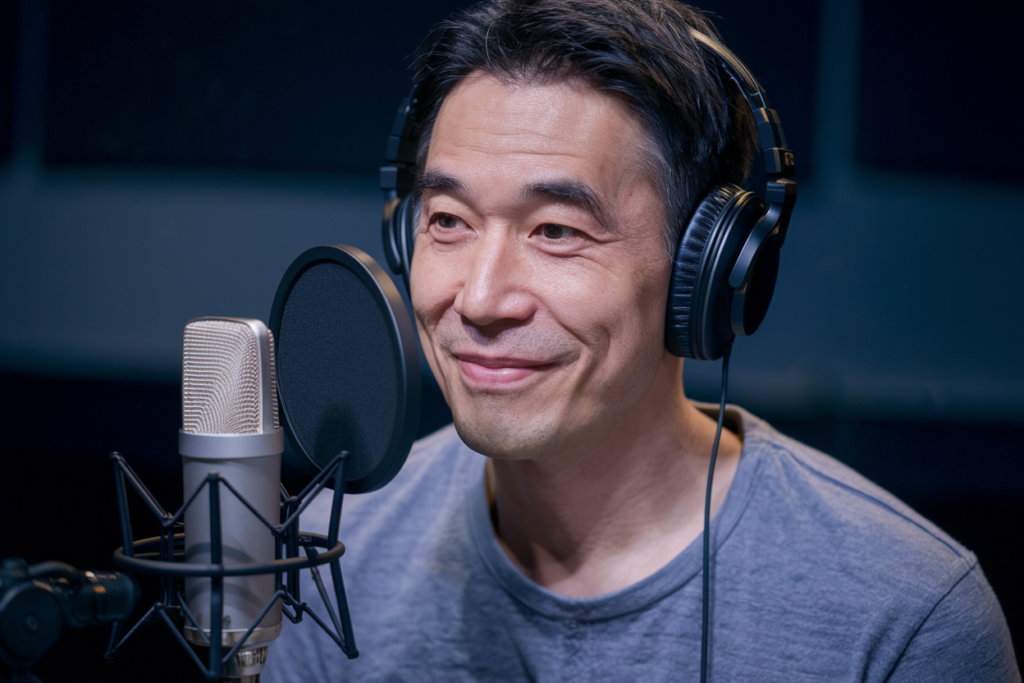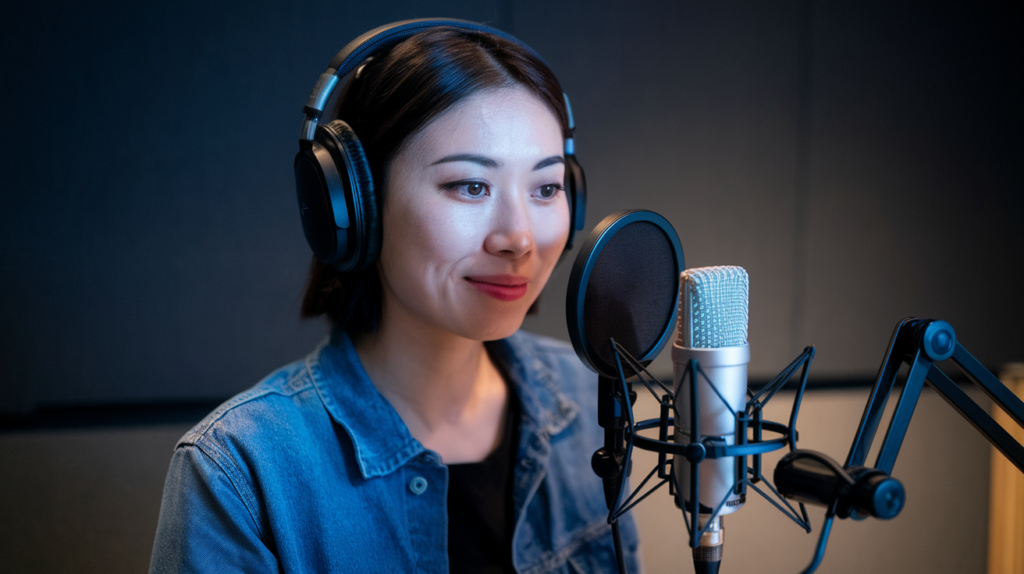Key Takeaways
- Understanding Voiceover Types: Distinguish between standard and regional Japanese voiceovers to select the right approach for your project, affecting audience connection and engagement.
- Standard Voiceover Characteristics: Standard voiceovers feature a neutral accent, ensuring clarity and professionalism across diverse audiences, making them ideal for corporate or educational content.
- Regional Voiceover Benefits: Utilizing local dialects and accents in regional voiceovers creates authenticity, enhancing relatability with specific audiences through cultural resonance.
- Audience Preferences Matter: Recognize that some audiences prefer the clarity of standard Japanese while others appreciate the local flavor of regional voices; tailoring your choice can elevate engagement levels.
- Voice Artist Versatility: Choose voice artists skilled in both standard and regional styles to adapt delivery based on target demographics, maximizing impact and effectiveness.
- Impact on Audience Engagement: The style of voiceover significantly influences how well your content resonates with listeners; prioritize either clarity or relatability based on your project’s goals.
Ever wondered why some Japanese voiceover projects sound so different from others? The distinction between standard and regional voiceovers can be a game-changer for your project. Understanding these differences isn’t just about choosing a voice; it’s about connecting with your audience on a deeper level.
Overview of Japanese Voiceover Projects
Japanese voiceover projects encompass a diverse range of styles and approaches, catering to various audiences. Understanding the difference between standard and regional voiceovers plays a crucial role in selecting the right voice talent for your project.
Standard Japanese voiceovers typically involve a neutral accent and tone, appealing to a broad audience. These are often used in corporate videos, commercials, or educational content where clarity and professionalism matter most. You want your message to resonate effectively with listeners from different backgrounds.
Regional voiceovers, on the other hand, incorporate distinct dialects or accents that reflect specific areas within Japan. By using regional variations, you can create an authentic connection with local audiences. Think about how incorporating these unique characteristics can enhance relatability in your project.
When considering voice artists for your project, it’s essential to evaluate their experience with both standard and regional styles. A skilled voice actor should adapt their delivery based on the intended audience while maintaining authenticity. Engaging a versatile voice over talent ensures that your message is delivered powerfully across various contexts.
Ultimately, choosing between standard and regional Japanese voiceovers involves understanding your target demographic’s preferences and cultural nuances. This knowledge empowers you to make informed decisions that elevate the effectiveness of your content while fostering genuine connections with listeners.
Standard Voiceover Practices
Standard voiceovers in Japanese projects prioritize neutrality, clarity, and professionalism. These practices cater to a wide range of audiences and applications, ensuring your message resonates effectively.
Key Characteristics
Standard voiceovers feature a neutral accent that avoids regional dialects. This approach enhances comprehension across diverse demographics. Voice artists often employ a calm tone and clear enunciation, which makes the content suitable for corporate videos, educational materials, and advertisements. By using standard practices, you ensure consistency in delivery while appealing to an extensive audience base.
Common Techniques
Voice actors utilize specific techniques to achieve the desired tone in standard voiceovers. Here are some common methods:
- Breath Control: Maintaining steady breath allows for smooth delivery without unnecessary pauses.
- Pacing: Adjusting speed ensures the content remains engaging yet comprehensible.
- Emphasis: Highlighting key phrases helps convey essential messages effectively.
- Warmth: Infusing a friendly tone fosters connection with listeners while maintaining professionalism.
By applying these techniques consistently, you enhance the impact of your voiceover projects and create memorable experiences for your audience.
Regional Voiceover Approaches
Regional voiceovers play a crucial role in connecting with specific audiences. These approaches leverage local dialects and accents, creating authenticity that resonates deeply with listeners.
Cultural Nuances
Cultural nuances significantly influence regional voiceover projects. Each region in Japan has distinct linguistic features, traditions, and expressions that reflect its culture. For instance, using a Kansai dialect can evoke familiarity and warmth among audiences from the Kansai region, while those from Tokyo may prefer standard Japanese. By selecting a voice actor who understands these subtleties, you enhance relatability and ensure your message aligns with cultural expectations.
Audience Preferences
Understanding audience preferences is vital when choosing between standard and regional voiceovers. Some viewers appreciate the clarity of standard Japanese for corporate communications or educational content. Others gravitate toward regional voices that convey local flavor and authenticity in commercials or entertainment projects. Engaging a voice artist who can adapt to these preferences ensures your project resonates effectively with its target demographic, fostering stronger connections through tailored delivery.
Comparison of Standard and Regional Practices
Understanding the differences between standard and regional practices in Japanese voiceovers can enhance your project’s effectiveness. Each approach offers unique benefits that cater to various audience needs.
Strengths and Weaknesses
Strengths of Standard Voiceovers:
- Neutrality: Standard voiceovers employ a neutral accent, making them accessible to a broad audience. This quality is crucial for corporate videos or educational content.
- Clarity: Clear enunciation ensures comprehension, reducing misunderstandings across demographics.
- Professionalism: A calm tone reflects reliability, fostering trust among viewers.
Weaknesses of Standard Voiceovers:
- Lack of Local Flavor: Some audiences may find standard voices less relatable due to their generic nature.
- Limited Emotional Connection: The neutrality might not evoke strong emotional responses compared to regional styles.
Strengths of Regional Voiceovers:
- Cultural Resonance: Using local dialects fosters authenticity, allowing audiences to connect more deeply with the content.
- Enhanced Relatability: Regional accents can create familiarity, especially for local markets, improving engagement levels.
Weaknesses of Regional Voiceovers:
- Potential Misunderstanding: Certain dialects might confuse those unfamiliar with them, impacting clarity.
- Narrow Audience Appeal: While effective locally, regional voices may alienate wider audiences who prefer standard delivery.
Impact on Audience Engagement
The choice between standard and regional voiceover styles significantly impacts how your content resonates with its intended audience. Engaging a skilled voice artist familiar with both approaches can elevate this connection.
Standard voiceovers excel in delivering clear messages suitable for formal contexts like corporate training or advertisements aimed at diverse groups. Their professionalism often leads to increased trust and credibility.
On the flip side, regional voice overs capture attention through cultural nuances that reflect local traditions and sentiments. When you use a recognizable accent or dialect relevant to your target demographic, it creates an immediate bond—viewers feel understood and valued.
Ultimately, tailoring your approach based on audience preferences enhances engagement levels significantly. Whether you prioritize clarity through standard delivery or relatability via regional nuances can determine how effectively your message lands with listeners.
Conclusion
Choosing between standard and regional Japanese voiceovers is a pivotal decision that can shape your project’s success. By recognizing the nuances of each style you can better connect with your audience. Standard voiceovers offer clarity and professionalism ideal for formal communications while regional variations bring authenticity and cultural resonance.
Understanding your target demographic’s preferences will guide you in making informed choices that elevate your content. Engaging skilled voice artists who adapt to these needs enhances audience engagement fostering genuine connections. Ultimately it’s about aligning your message with the right delivery to ensure it resonates effectively.
Frequently Asked Questions
What is the difference between standard and regional voiceovers in Japanese projects?
Standard voiceovers use a neutral accent, making them suitable for corporate or educational content. Regional voiceovers incorporate local dialects and accents, enhancing relatability with specific audiences. Understanding these differences is crucial for effective communication.
When should I choose standard voiceover over regional voiceover?
Choose standard voiceover when your project requires clarity and professionalism, such as in corporate videos or educational materials. It ensures comprehension across diverse demographics without cultural bias.
Why are regional voiceovers important in Japanese media?
Regional voiceovers create authenticity and foster emotional connections with local audiences by using familiar dialects. They enhance engagement in commercials or entertainment that targets specific demographic groups.
How can I evaluate a voice artist’s suitability for my project?
Assess their experience with both standard and regional styles, as well as their ability to adapt delivery to audience preferences. Listen to samples of their work to gauge versatility and authenticity.
What techniques do professional voice artists use for effective delivery?
Voice artists commonly use breath control, pacing, emphasis, and warmth to enhance engagement. These techniques ensure clear enunciation while maintaining professionalism across various projects.
Are there any drawbacks to choosing regional voiceovers?
While regional voices enhance relatability, they may alienate broader audiences who prefer standard Japanese. Misunderstandings can occur if the dialect is unfamiliar, potentially impacting message effectiveness.
How does cultural nuance influence the choice of voiceover style?
Cultural nuances dictate audience preferences; some may favor the neutrality of standard Japanese while others appreciate the local flavor of regional accents. Understanding these subtleties helps tailor content effectively.
Can a single project benefit from both types of voiceovers?
Yes! Using both styles can cater to different segments within your target audience—standard for formal sections and regional for more relatable elements—enhancing overall engagement and connection.







